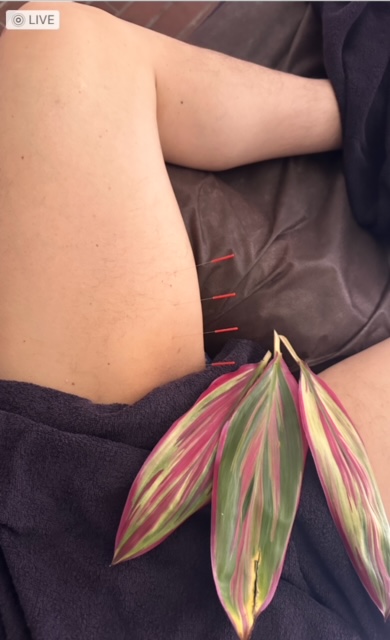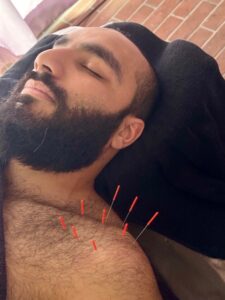胡坐がかけない
I can't sit cross-legged

sitting cross-legged (i.e. Indian style)
not being able to sit cross-legged (i.e. not being able to sit on the floor)
あぐらををかこうとしても、片方の足だけ、体が硬くてできない、膝が高く上がってしまう、背中が丸まってしまう、股関節につまりを感じることで治療院に来院。
あぐらで心地よく安定して座るためには、ある程度股関節まわりの筋肉の柔軟性が必要です。股関節の動きの中でも、曲げる、足を開く、足を横に捻るが硬くなっているとあぐらがうまくかけないです。
股関節を曲げる動き(屈曲)、ハムストリング(腿の裏側)や殿筋
股関節をひらく動き(外転):内転筋群(内腿)
股関節を外側に捻る動き(外旋):殿筋群、梨状筋(お尻)
今回の鍼灸治療では、あぐらをかこうとすると、内腿がつっぱるということで、縫工筋に刺鍼して、筋肉をゆるめています。縫工筋には屈曲、外転、外旋の作用があるので、この筋肉が縮んだり硬いとあぐらをかくことが難しくなります
Patients come to the clinic because they try to sit on their legs, but can't because one leg is too stiff, their knee rises too high, their back is rounded, or they feel a tightness in their hip joints.
In order to sit comfortably and stably in a cross-legged sitting position, the muscles around the hip joint need to be flexible to a certain extent. If the hip joint movements such as bending, opening the legs and twisting the legs sideways are stiff, it is difficult to sit on the floor.
Movements to bend the hip joint (flexion), hamstring (back of the thigh) and psoas muscles
Movement to open the hip joint (abduction): adductor muscle group (inner thigh)
Movement to twist the hip outwards (external rotation): psoas muscle group, piriformis muscle (buttocks)
In this acupuncture treatment, the inner thigh is tight when sitting cross-legged, so acupuncture was applied to the suture muscles to loosen the muscles. The suture muscle has the function of flexion, abduction and external rotation, so if this muscle is contracted or stiff, cross-legged sitting becomes difficult.


